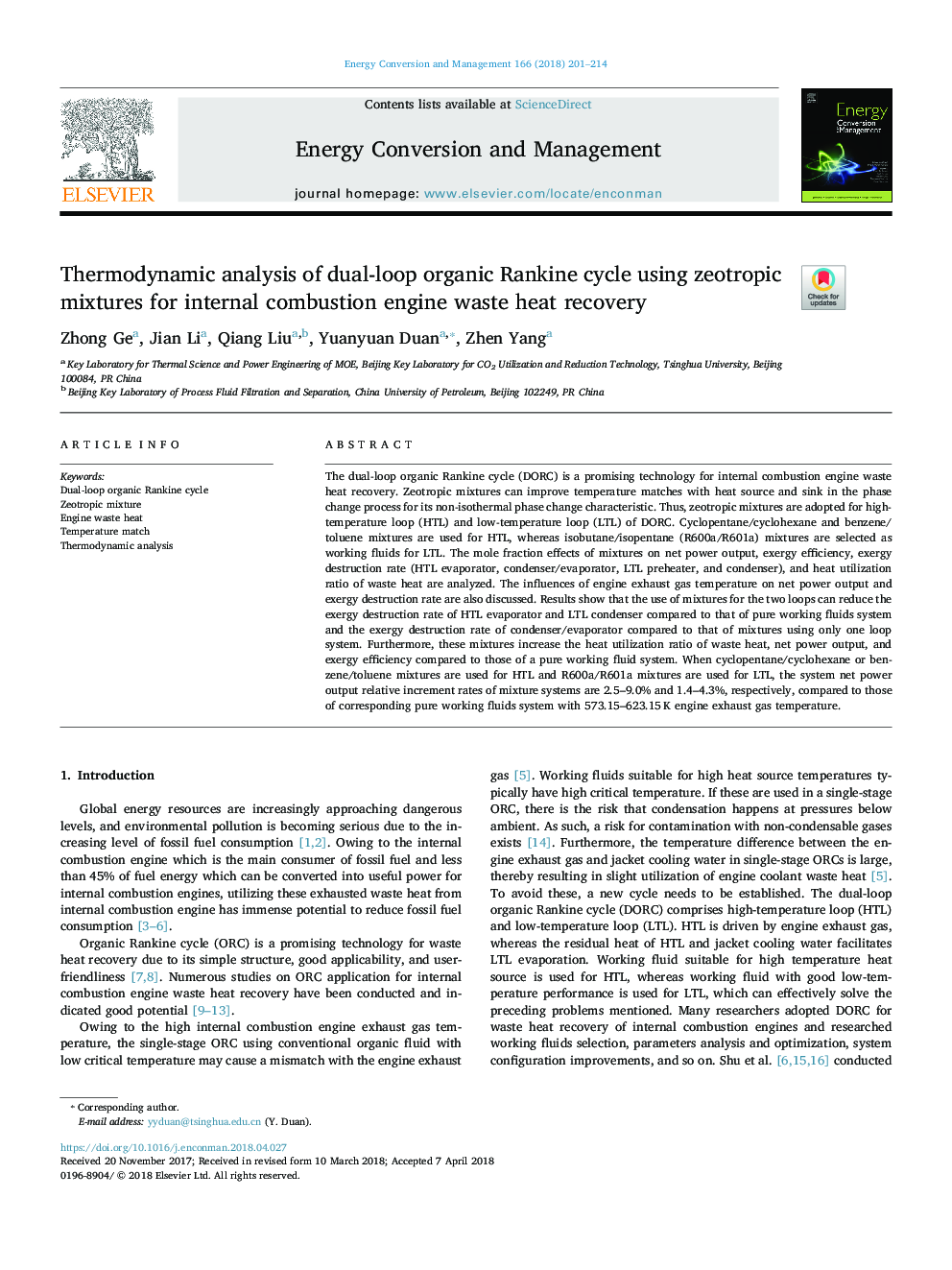| Article ID | Journal | Published Year | Pages | File Type |
|---|---|---|---|---|
| 7158485 | Energy Conversion and Management | 2018 | 14 Pages |
Abstract
The dual-loop organic Rankine cycle (DORC) is a promising technology for internal combustion engine waste heat recovery. Zeotropic mixtures can improve temperature matches with heat source and sink in the phase change process for its non-isothermal phase change characteristic. Thus, zeotropic mixtures are adopted for high-temperature loop (HTL) and low-temperature loop (LTL) of DORC. Cyclopentane/cyclohexane and benzene/toluene mixtures are used for HTL, whereas isobutane/isopentane (R600a/R601a) mixtures are selected as working fluids for LTL. The mole fraction effects of mixtures on net power output, exergy efficiency, exergy destruction rate (HTL evaporator, condenser/evaporator, LTL preheater, and condenser), and heat utilization ratio of waste heat are analyzed. The influences of engine exhaust gas temperature on net power output and exergy destruction rate are also discussed. Results show that the use of mixtures for the two loops can reduce the exergy destruction rate of HTL evaporator and LTL condenser compared to that of pure working fluids system and the exergy destruction rate of condenser/evaporator compared to that of mixtures using only one loop system. Furthermore, these mixtures increase the heat utilization ratio of waste heat, net power output, and exergy efficiency compared to those of a pure working fluid system. When cyclopentane/cyclohexane or benzene/toluene mixtures are used for HTL and R600a/R601a mixtures are used for LTL, the system net power output relative increment rates of mixture systems are 2.5-9.0% and 1.4-4.3%, respectively, compared to those of corresponding pure working fluids system with 573.15-623.15â¯K engine exhaust gas temperature.
Related Topics
Physical Sciences and Engineering
Energy
Energy (General)
Authors
Zhong Ge, Jian Li, Qiang Liu, Yuanyuan Duan, Zhen Yang,
